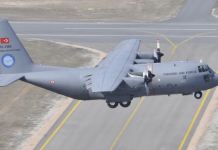“Once a mirror is cracked, it never reflects the same.”
In June, Israel and the US crossed a historic threshold by launching direct strikes inside Iran, something that both countries had avoided since the Iranian revolution of 1979.
Since that taboo has been shattered, direct strikes between Iran and Israel, separated by a distance of over 2,300 km, seem like fair game, and if reports are to be believed, the next Israel-Iran war is “only a matter of time.”
In fact, both Tehran and Tel Aviv have been preparing for that eventuality and ramping up their weapons production for the next round of hostilities, with Iran focusing on ballistic missiles and Israel on air defense missiles.
Next Iran-Israel War “Only A Matter Of Time”
On November 9, the New York Times reported that the June strikes by Iran and the US failed to destroy the Iranian stockpile of enriched Uranium, and with negotiations on its nuclear program appearing to have reached a dead end, regional officials and analysts warn that another outbreak of war between Israel and Iran is “only a matter of time.”
The report further states that since Israel views the Iranian nuclear program as an “existential threat,” another round of Israeli strikes in Iran is imminent.
Rafael Grossi, director of the International Atomic Energy Agency, told The Financial Times last week that the organization believes that the majority of Iran’s stockpile of highly enriched Uranium survived the war, but that its status is unclear without inspections.
He estimated that Iran has roughly 400 kilograms of 60 percent enriched uranium, which is close to weapons-grade.
Furthermore, Iran is likely to respond to any Israeli attack in a far less restrained way than it did in June, said Ali Vaez, the Iran project director at the International Crisis Group.
In fact, Iran is already preparing for that next round of hostilities.
Iran Ramping Up Missile Production For Its Next War
Ali Vaez told the NYT that Iranian missile factories are working 24 hours a day and if there is another war, “they hope to fire 2,000 at once to overwhelm Israeli defenses, not 500 over 12 days” as they did in June.
During the 12-day war, Iran launched approximately 530–550 ballistic missiles toward Israel, with around 480–500 approaching Israeli airspace after accounting for launch failures or mid-flight malfunctions.
Israel and the US were able to intercept nearly 85-90% of these incoming missiles; however, almost 48 Iranian missiles were able to penetrate and strike Israeli territory, killing 28 civilians.
Iranian missiles hit an oil refinery in Haifa and struck a hospital, a science institute, and residential areas. They also landed on or near Israeli airbases and high-level command posts.

A map of reciprocal strikes by Iran and Israel during the 12-day war. Credits European Union Institute for Security Studies (EUSS).
Iranian strategy was to saturate multi-layered Israeli air defenses by launching a salvo of 100+ missiles in a single batch.
Emboldened by its success in hitting Israeli territory during the 12-day war, Iran has decided to double down on its missile production.
Last week, Iran’s Foreign Minister Abbas Araghchi said that Tehran’s current missile power exceeds levels before the 12-day war with Israel in June and that its arch-foe was defeated in the conflict.
“Our missile power today far surpasses that of the 12-day war. The enemy in the recent 12-day war failed to achieve all its objectives and was defeated,” Araghchi said.
Recounting Iranian success in hitting Israeli territory, Araghchi said, “In this war, the skies over the Zionist regime were under Islamic Republic control, and no defensive layer could stop our missiles.”
“Iran’s defense production has improved both in quantity and quality compared to before the 12-day Israeli-imposed war in June,” said Brig. Gen. Aziz Nasirzadeh, the country’s defense minister.
Notably, Iran is also getting substantial help from China in its missile rebuilding program.
The CNN reported last month that “European intelligence sources say several shipments of sodium perchlorate, the main precursor in the production of the solid propellant that powers Iran’s mid-range conventional missiles, have arrived from China to the Iranian port of Bandar Abbas.”
According to multiple media reports, China is also supplying its advanced HQ-9 Air Defense system to Iran, and Russia is providing Tehran with MiG-29 fighter jets.
In October, alleged leaks from Rostec, Russia’s state defense conglomerate, suggested that Iran may be preparing to acquire 48 Sukhoi Su-35 fighter jets from Moscow.
Meanwhile, Israel is focused on filling its air defense gaps that were exposed by Iranian ballistic missiles during the 12-day war.
Israel faces a two-front challenge: improving its missile interception rate, which stood at around 85-90% during the June war, and ramping up production of its air defense missiles.
Notably, though Israel and the US were able to shoot down nearly 85-90% of Iranian missiles, it inflicted a heavy cost on the US and Israeli stockpiles of air defense missiles.

12-Day War and Israeli & US Stockpiles Of AD Missiles
Interestingly, only after a week of the Iran-Israel war, there were reports that Israel was left with only 12 days of air defense missile stockpile.
On June 18, after five days of war, a senior U.S. official told The Wall Street Journal that Israel’s supply of the advanced Arrow system — used to intercept high-altitude ballistic missiles — is running low.
“Neither the U.S. nor the Israelis can continue to sit and intercept missiles all day,” said Tom Karako, director of the Missile Defense Project at the Center for Strategic and International Studies. “The Israelis and their friends need to move with all deliberate haste to do whatever needs to be done, because we cannot afford to sit and play catch.”
“The system is already overwhelmed. Soon, they may have to choose which missiles to intercept,” the US official said.
Similarly, the THAAD operators fired as many as 150 missiles during the 12-day war to shoot down waves of Iranian ballistic missiles, US defense officials told the Wall Street Journal.

Worryingly, this accounted for a quarter of all THAAD interceptors ever purchased by the Pentagon, exposing gaps in the US missile defense stockpile.
“While Israeli officials credited the American systems for saving thousands of lives, the war revealed an alarming gap in U.S. supplies,” the report said.
The report highlighted that a prolonged war could have compelled the US and Israel to divert interceptors intended for other countries or prioritize aerial threats, deliberately allowing certain missiles to skip through the missile defense architecture.
“The demand was so staggering that at one point, the Pentagon considered a plan to divert interceptors purchased by Saudi Arabia to the systems in Israel,” a US defense official said.
The swiftly exhausting stockpiles of air defense missiles played a prominent role in Israel agreeing to a ceasefire with Iran, just after 12 days of warfare.
Alarmed by the fact that just a 12-day war with Iran, a mid-level power reeling under decades of crippling sanctions, exposed the limited magazine depth of US and Israeli air defense systems, both countries have since decided to ramp up their AD missile production.
The US established the Munitions Acceleration Council to ramp up production of AD missiles.
Similarly, “The Director General of the Israel Ministry of Defense (IMOD), Maj. Gen. (Res.) Amir Baram, signed a production contract to significantly accelerate the serial production of Arrow interceptors at IAI (Israel Aerospace Industries),” the Israeli Ministry of Defense said in a statement in July.
“Accelerating the production rate of the Arrow and other critical systems is a central component of the Ministry’s strategy to expand production capabilities and improve operational readiness for the continuation of the war and future campaigns,” Baram noted in the ministry’s statement.
Meanwhile, Israel is also working to integrate new AD systems, such as Arrow 4 (set to replace Arrow 2) and Sky Sonic (a new AD system to intercept hypersonic missiles).
In June 2023, Rafael Advanced Defense Systems unveiled its “Sky Sonic” interceptor, the first system of its kind, developed to defend against hypersonic missiles with complex maneuverability in the upper atmosphere.
According to Rafael, the Sky Sonic is designed for “unprecedented maneuverability and high-speed capabilities,” allowing it to neutralize hypersonic threats that current air defense systems are not designed to handle.
Notably, Iran claims that it has hypersonic missiles, such as the Fattah-1 and Fattah-2.
Clearly, both countries are rebuilding their arsenals for the next round of hostilities.
While another war between Iran and Israel looks imminent, it seems the timing of the war will be decided by the pace of Tehran’s nuclear program.
- Sumit Ahlawat has over a decade of experience in news media. He has worked with Press Trust of India, Times Now, Zee News, Economic Times, and Microsoft News. He holds a Master’s Degree in International Media and Modern History from the University of Sheffield, UK.
- VIEWS PERSONAL OF THE AUTHOR.
- He can be reached at ahlawat.sumit85 (at) gmail.com




